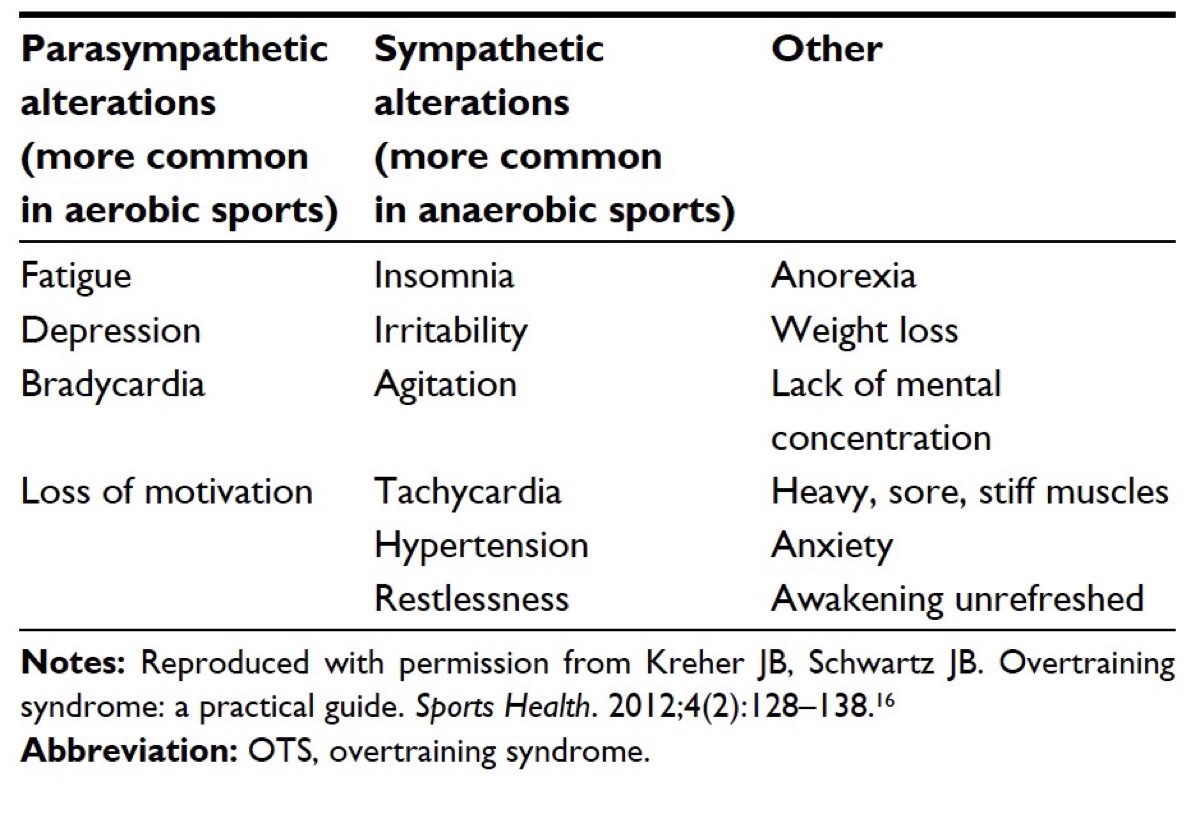Overtraining syndrome 5
The most common OTS symptoms. It should be noted in this chart that parasympathetic and sympathetic alterations refer to the two divisions of your autonomic nervous system where parasympathetic is responsible for the ‘rest and digest’ bodily functions, and sympathetic is responsible for the ‘fight or flight’ bodily functions. Additionally, bradycardia means a low heart rate (below 50 beats per minute) and tachycardia means an elevated heart rate (over 100 beats per minute at rest). Image courtesy of Kreher, J. (2016). Diagnosis and prevention of overtraining syndrome: An opinion on education strategies. Open Access Journal of Sports Medicine,Volume 7, 115-122. doi:10.2147/oajsm.s91657.

